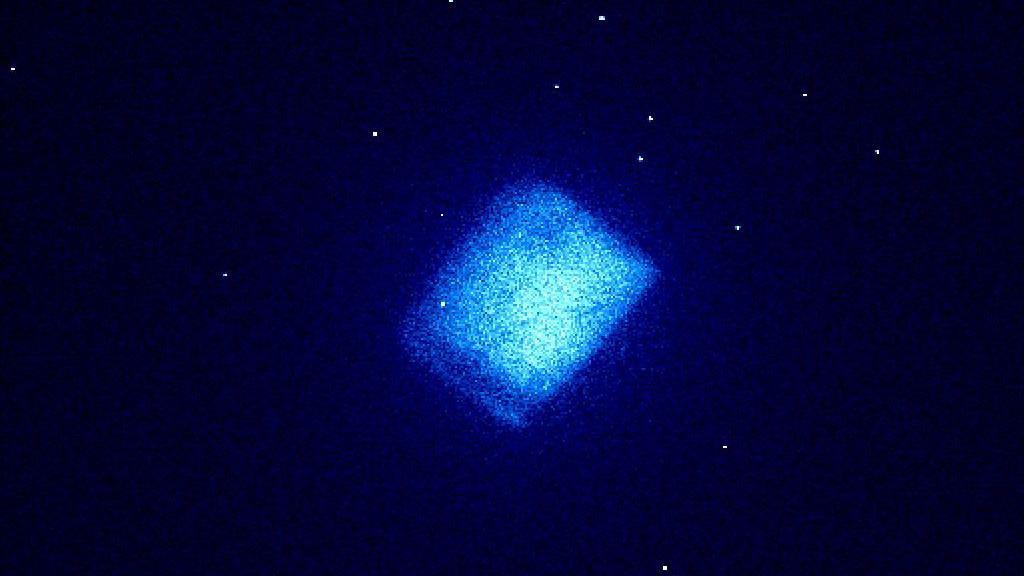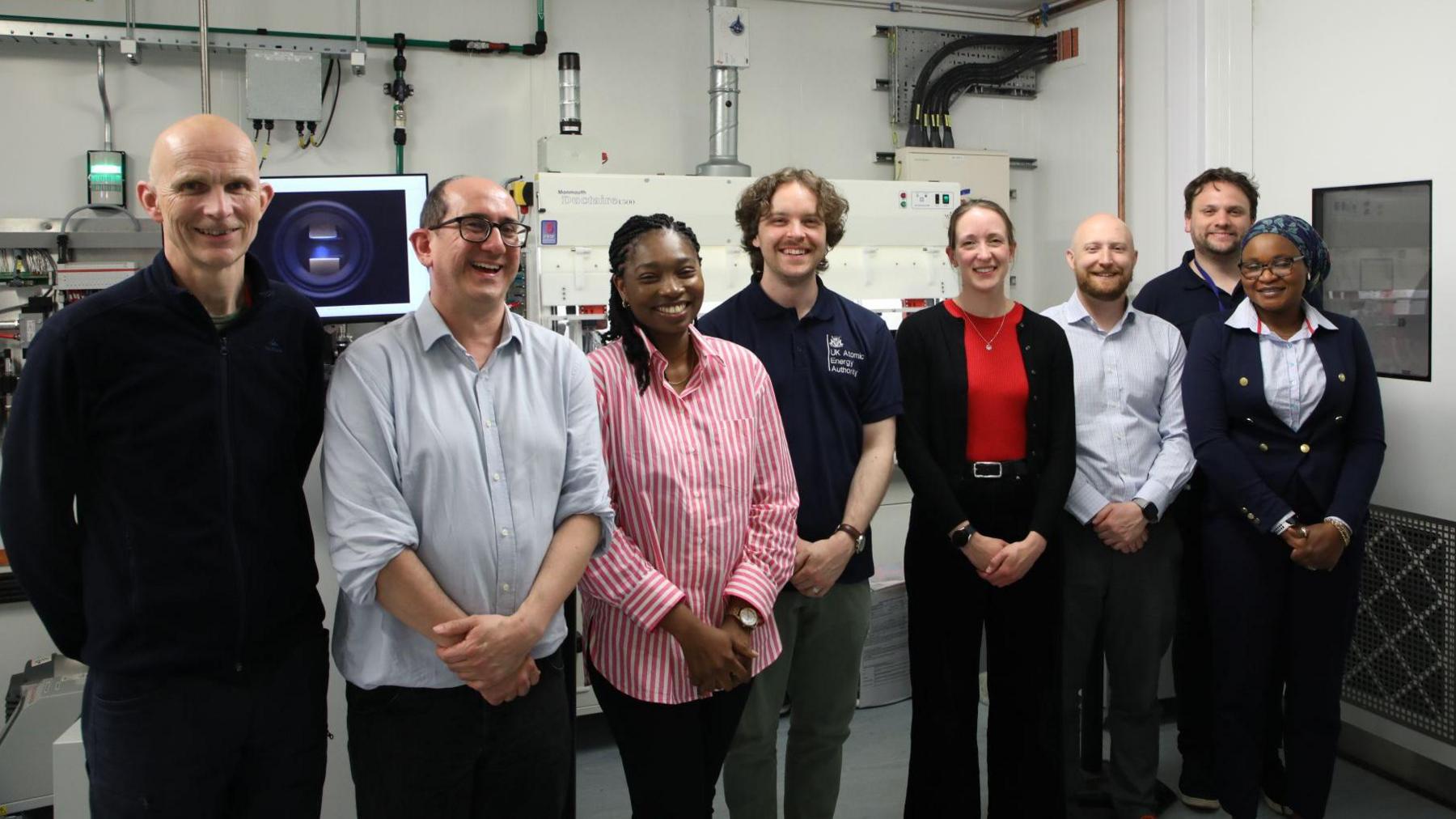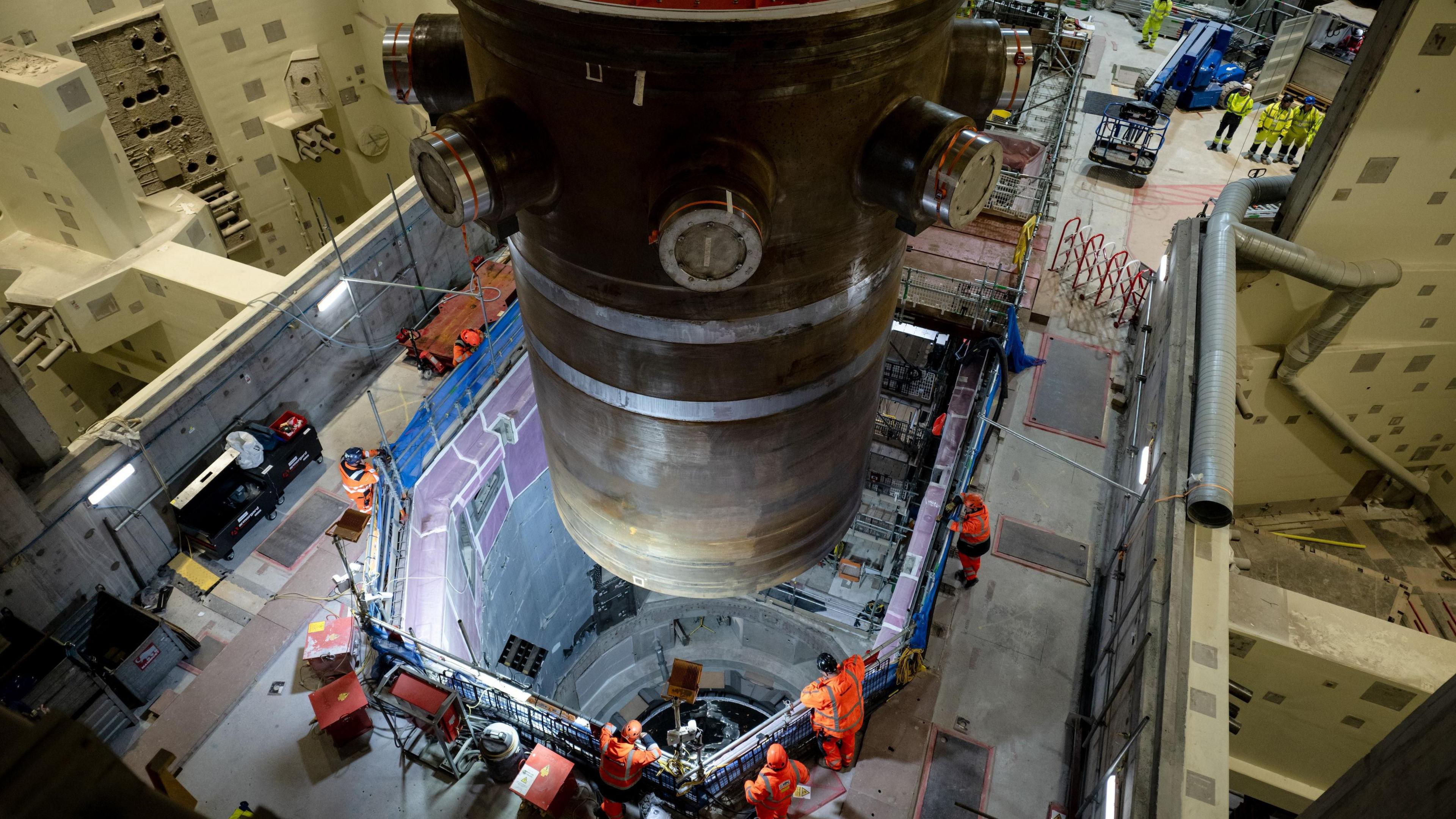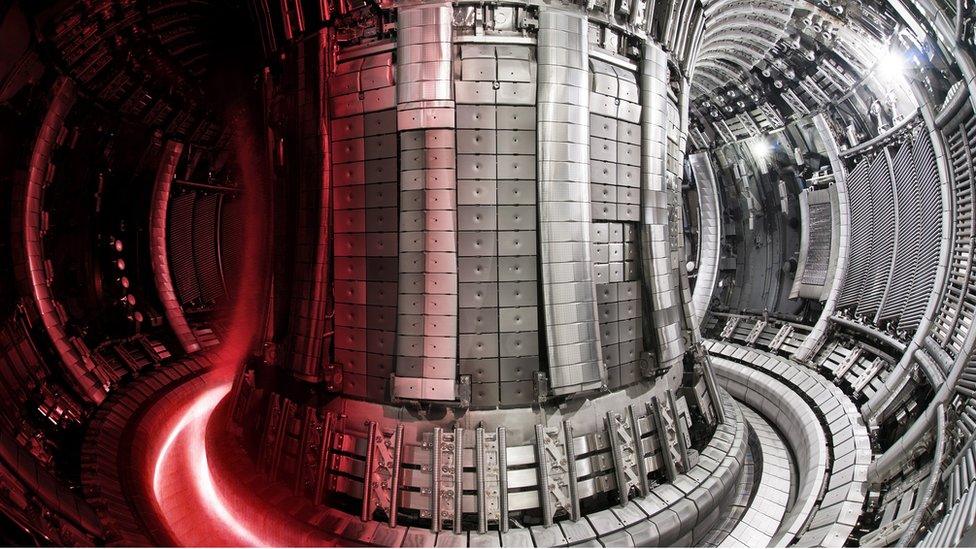What is the new battery that never dies?

Scientists say the battery can be used in medical devices like hearing aids minimising the need for replacements
- Published
Scientists and engineers have created a battery that has the potential to power devices for thousands of years.
The UK Atomic Energy Authority (UKAEA) in Culham, Oxfordshire, collaborated with the University of Bristol to make the world’s first carbon-14 diamond battery.
Scientists say it could be used with medical devices like ocular implants, hearing aids and pacemakers, minimising the need for replacements.
Sarah Clark, director of tritium fuel cycle at UKAEA called it a "safe, sustainable way" to provide continuous power.

Members of the diamond battery team at UKAEA
She added: "They are an emerging technology that use a manufactured diamond to safely encase small amounts of carbon-14.”
How does it work?
The battery uses carbon-14, a radioactive isotope of carbon, which has a half-life of 5,700 years meaning the battery will still retain half of its power even after thousands of years.
The prototype batteries are 10mm x 10mm with a thickness of up to 0.5mm.
Carbon-14 was chosen because it emits a short-range radiation, which is quickly absorbed by any solid material.
It is safely held within a diamond – the hardest substance known to humankind – which means no short-range radiation can escape.
It functions similarly to solar panels but instead of using light particles, it captures fast-moving electrons from within the diamond structure.
The battery could also be used in extreme environments – both in space and on earth – where it is not practical to replace conventional batteries.
Professor Tom Scott, from the University of Bristol, said: “Our micropower technology can support a whole range of important applications from space technologies and security devices through to medical implants. We're excited to be able to explore all of these possibilities, working with partners in industry and research, over the next few years.”
The battery also provides a safe way of dealing with nuclear waste.
Carbon-14 is generated in graphite blocks in some nuclear fission powerplants.
The UK holds almost 95,000 tonnes of graphite blocks and, by extracting carbon-14 from them, their radioactivity decreases, reducing the cost and challenge of safely storing the waste.
Get in touch
Do you have a story BBC Oxfordshire should cover?
You can follow BBC Oxfordshire on Facebook, external, X (Twitter), external, or Instagram, external.
- Published4 December 2024

- Published8 February 2024
